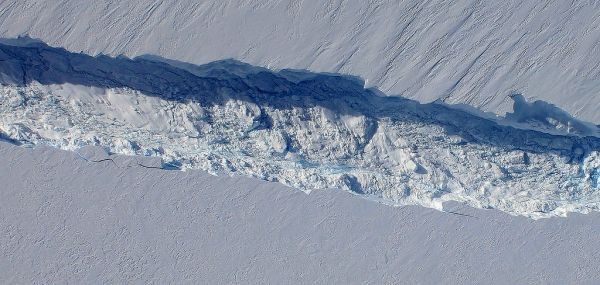NASA Finds Iceberg Larger than NYC Breaking Off Antarctic Glacier

NASA researchers flying over Antarctica’s frozen landscape witnessed an enormous iceberg forming from one of Antarctica’s largest and fastest moving glaciers.
Scientists were taking part in NASA’s “Operation Iceberg” when they flew above the Pine Island Glacier and came across the iceberg in the making. Once it breaks off the Pine Island glaciers ice shelf will recede farther than any point since the 1940’s, when this location was first mapped.
They found that the rift had a diameter as large as 820 feet at its widest point. The researchers said that once it breaks free and becomes and iceberg it will have about 340 square miles of surface area, which is larger than New York City at about 303 square miles. The iceberg will be 1,600 feet thick mostly underneath water.
Pine Island, which is one of the largest and fasting moving glaciers in Antarctica, has a history of capturing the attention of scientist because of the rate at which its ice is thinning. Its melting process has not come as much of a shock to some researchers.
“It’s part of a natural cycle, but it’s still very interesting and impressive to see up close,” said IceBridge project scientist Michael Studinger. “It looks like a significant part of the ice shelf is ready to break off.”
But research shows that glaciers of Greenland and Antarctica are melting at accelerating paces and can potentially be the biggest contributors to rising sea levels.
As reported in Climate Central, the acceleration in ice mass loss from the ice sheets had already surpassed acceleration in ice mass loss from mountain glaciers and ice caps, in which is likely to grow over the coming century, predicting that ice sheets will be “the dominant contributor to sea level rise in the 21st century.”
Watch the below video as researchers taking part in NASA’s “Operation Iceberg” discuss the event:



























